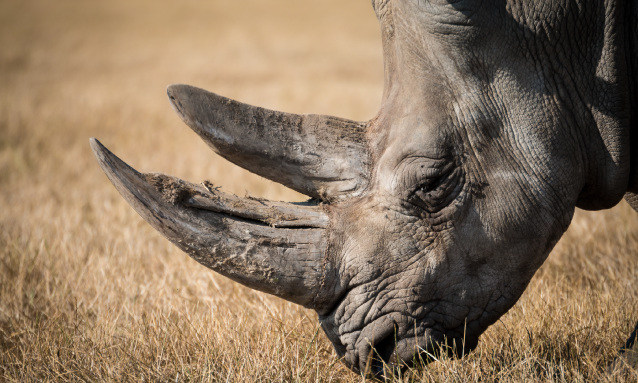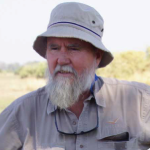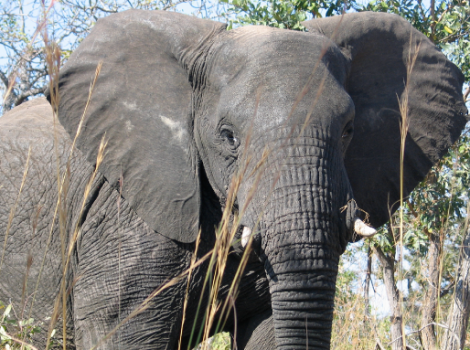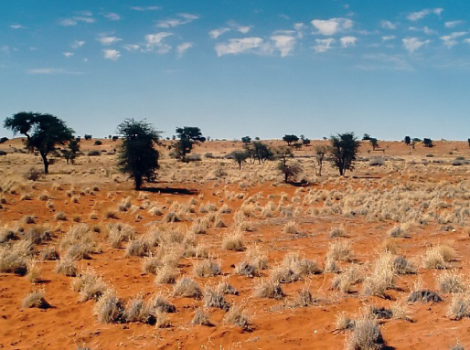
Imagine, if you will, Botswana’s Okavango Delta in 1850: vast, sprawling grassy plains and lush verdant waters, attracting populations of elephant, giraffe, lion, cheetah, zebra and rhinoceros in their hundreds or thousands. Sadly, the beautiful scene doesn’t last long.
By 1900, the white rhino had been reduced from an estimated 300,000 or 400,000 to less than 100 animals in the world. By 1985, the rhino population in Botswana had winnowed to extinction, the last animal shot to death after a century of poaching for horn and hide. By the turn of the century, there were just 2,000 black rhino on earth.
But in 2000, The Botswana Rhino Reintroduction Project was set up by tourism company Wilderness Safaris and the Botswana Department of Wildlife and National Parks. Over the last 18 years, the white rhino and the black rhino have returned to the Okavango Delta. It is a conservation success story which illustrates how local species extinction, as long as there are animals remaining, can be reversed.
The first task was translocating animals from other countries, such as South Africa and Zimbabwe. Translocation of rhinos is a serious business, which involves significant coordination from different partnerships, as well as will, drive and passion. Sometimes up to 15 different stakeholders will be involved.

“Moving rhino from one country to another requires very careful planning and preparation,” explained Dr. Markus Hofmeyr of Rhinos Without Borders, who have run the translocations since 2012.
“They need to be transported individually in crates and managed during the entire trip so that they don’t damage themselves in the crates. Border crossings have to be carefully planned so that there are no delays there. As rhino are CITES-regulated species a lot of approvals and habitat, veterinary and security checks are required to ensure that all legal requirements are met before the rhino are moved and released into their new areas.”
Map Ives, a citizen of Botswana, was part of the original team at Wilderness Safaris. Then, in 2016, he set up Rhino Conservation Botswana (RCB) to improve and coordinate the crucial monitoring of the population in order to keep the animals safe and thriving.
Tracking rhino is no mean feat. The rhinos live in an area of 15,000 square kilometres in the Okavango but the surrounding savannah and non-enclosed wildlife areas that the rhinos can move into stretches to 45,000 square kilometres. Working directly with the wildlife department and governmental defence forces, RCB uses low-flying aircraft, people on the ground and electronic methods to monitor the animals.
Data includes information on territory, location of breeding and breeding rates. Environmental information includes water and feeding locations, which may change by season, and threats such as wildfires. When the patrols come across signs of poaching – footprints or horse tracks – the information is passed to the security services. The Botswana Defence Force provide security for both the white rhinos and the small population of black rhinos.
Although Ives cannot divulge the exact number of rhinos living in Botswana today, he says the number of translocations is “well over 100 animals” with an exponential rise because of breeding.

“Those are the adult animals. We have achieved very impressive breeding rates so we’ve added considerably over 18 years. I remember back in 2002 the first calves born were females. Those young females themselves have calves now. The third generation are about to be born.”
The Botswana programme took inspiration from how the white rhino recovered in South Africa throughout the 1900s under a range expansion programme. This involved monitoring the animals as their breeding rates came into balance with the food and water availability of the territory. Once breeding rates dropped when populations reached capacity, selected females and males were moved to another suitable area.
“The South Africans showed that with the correct monitoring and management and correct range expansion strategies you can increase rhino numbers,” says Ives.
But devastatingly, in the late 2010s, poaching rose in Southern Africa. In 2007, 13 rhinos were poached. In 2008, the number was 68. By 2010, the number of rhinos lost each year reached 1,000. Largely, rhinos are poached for the demand for rhino horn in China, Vietnam and Laos.
“We were doing really well,” says Ives. “But then came the vicious, highly well-organised and well-organised syndicated attack on rhinos in Southern Africa, by criminal networks of international poachers.
Security has been beefed up, says Ives, but the poaching has set rhino conservation back to pre-2000 levels.
“At the moment, the white rhino numbers are not increasing, but we are not losing. You will never stop poaching but we want to keep it below the breeding rate.”
Ives compares Botswana to an ark, one of several in Africa, which provide a home for rhinos with lower levels of poaching.
“We weren’t to know in 2000 that we would be part of an exercise to bring rhinos to a safer place,” he says.
“The new poaching epidemic had not yet kicked in. By 2008 it took on new meaning.”
And what of the future? Alongside planned translocations, conservation efforts will focus on monitoring and security. And Ives wants to grow his organisation.
“We are very optimistic but we have a long, long way to go. We are a small trust desperately seeking partnerships around the world.”
Another objective is to show other countries how rhino reintroduction – and reintroduction for other species – can be done.
“Imagine the day, the vision I have, when we’re taking animals to other countries in Africa, or other areas in Botswana for our children and our children’s children,” says Ives.
“Their role in biodiversity means a healthier planet, healthier air, healthier water and healthier spirits.”
“My hope remains really positive for rhino,” agrees Hofmeyr.
“It remains my dream that the efforts that we are collectively making will benefit future generations and that rhino can be seen by our future generations in Botswana.”
Source: bbc.com



